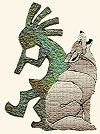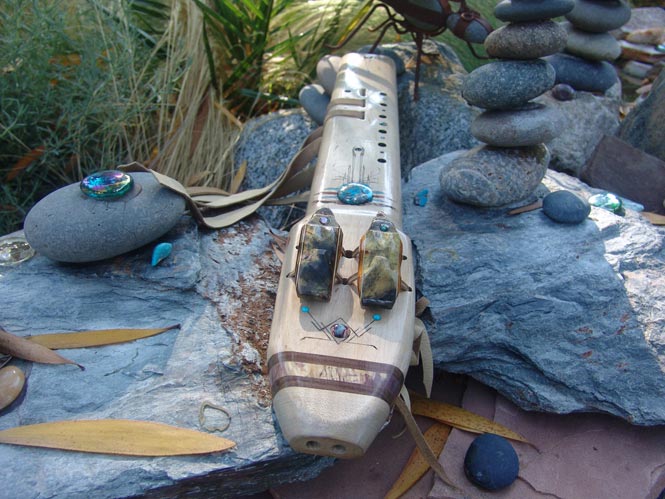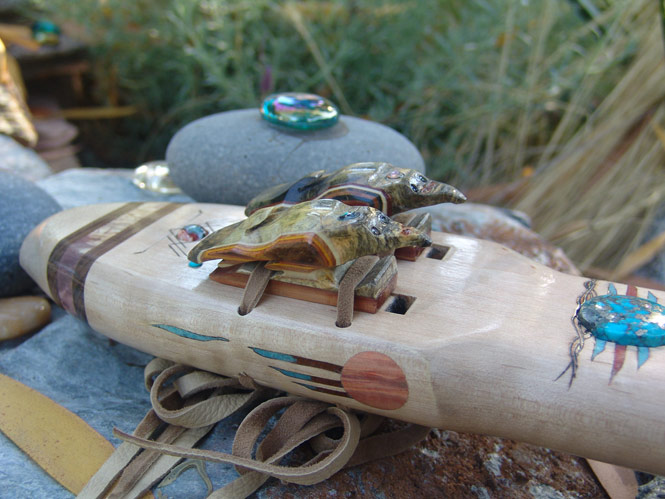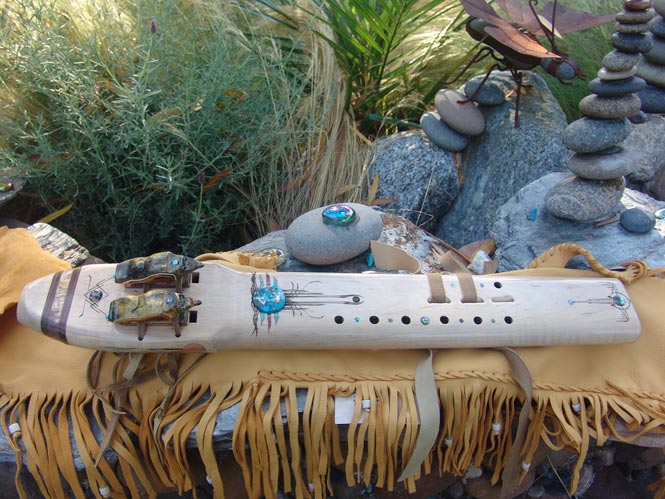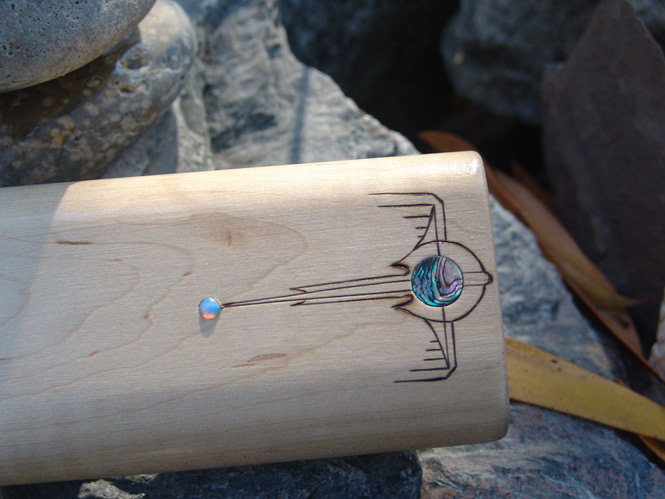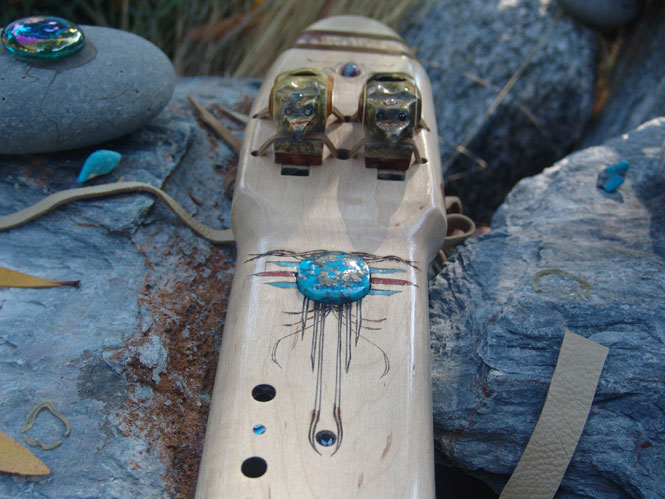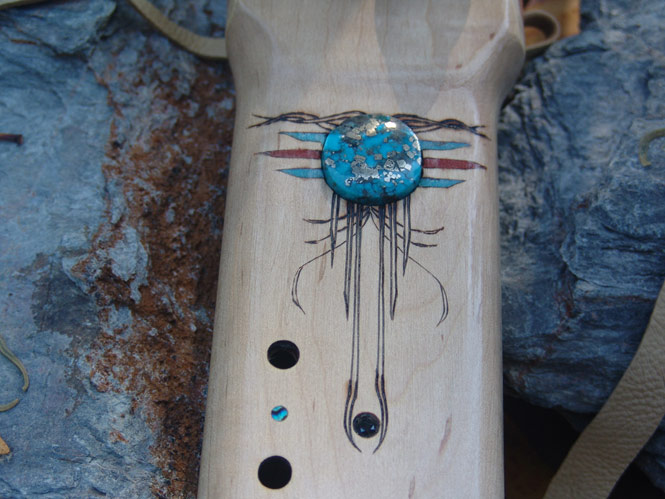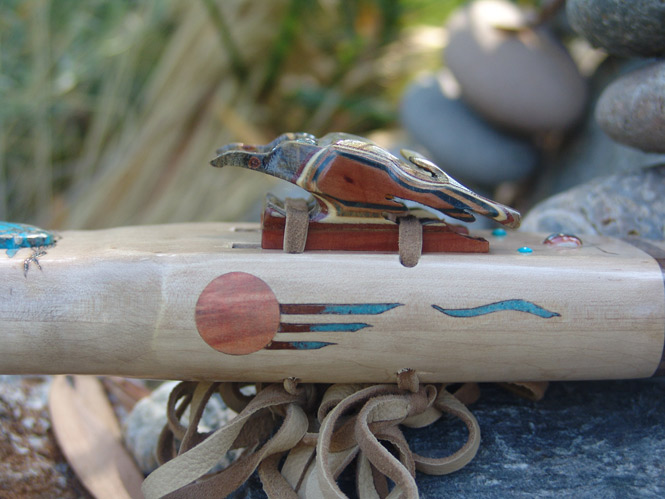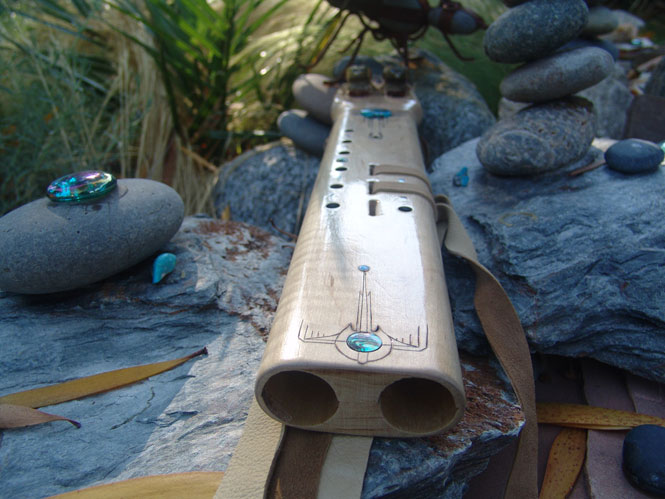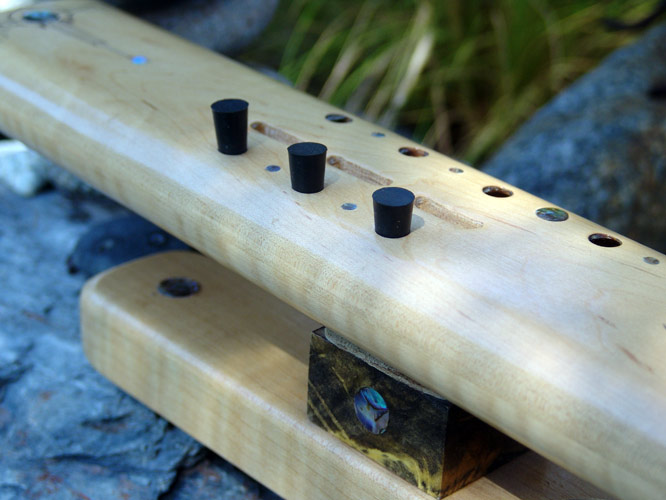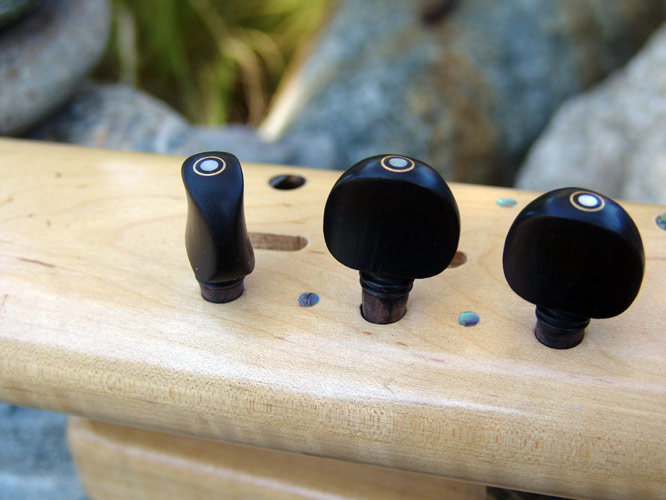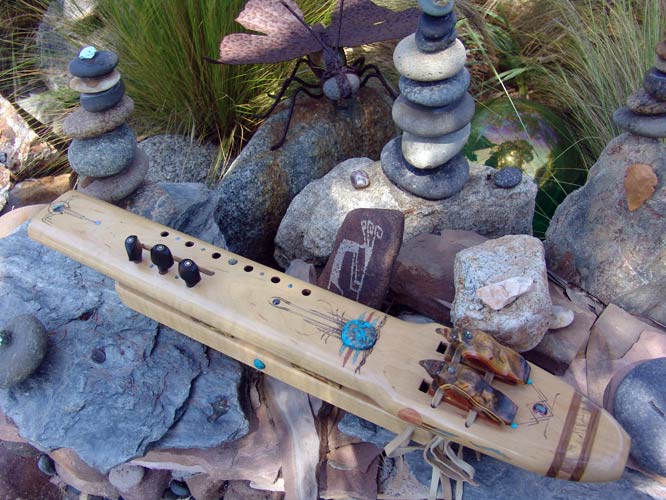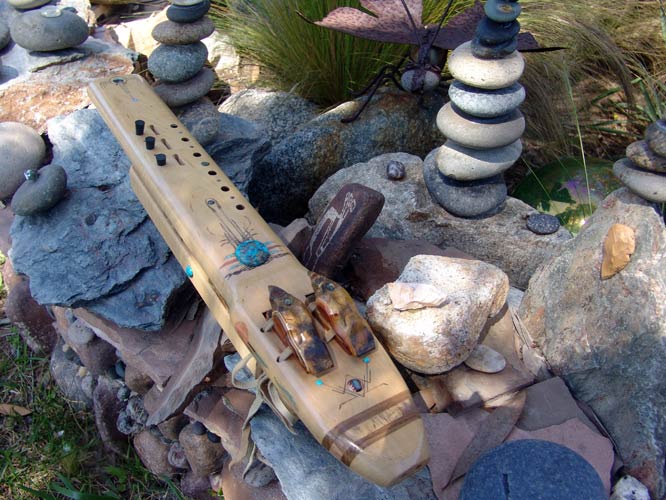$1,170.00
FREE DOMESTIC SHIPPING
Curly Maple Alt. Drone F#m…
SOLD
This sequentially alternating drone flute is 22-3/4” in length, with bore diameters approximating one inch. The mouthpiece is shaped from laminates of dyed/stabilized box elder burl, between layers of Bolivian rosewood, and capped with curly maple.
The matching fetish blocks are cut from California buckeye burl, bonded to bases of Oklahoma red cedar. A total of eleven woods were used in building these birds, as I didn’t want them to be completely identical. Specifically, the lighter of the two, consists of buckeye bonded to Mappa burl, Yew, systemically dyed maple*, Acacia Koa, and Virginia walnut burl. The other includes overlays of tiger Makore, White Ash, systemically dyed maple, figured Anigre, more syst. Dyed maple, and Madrone burl. *The maple tree was fed harmless colored water during growth cycles, and upon harvest, the veneers had developed a rainbow coloration due to the colored water uptake.
Inlay for this monster is extensive. Beginning with the mouthpiece, a beautiful 11mm dome cut Mexican boulder opal is flanked by two 4mm dome cut turquoise cabs. The sides of the compression chamber start with 18mm disks of box elder burl accented with crushed Mexican Limonite and Turquoise from the Sleeping Beauty mine in Globe AZ. The flute ties run through the flute, to avoid obstructing these designs to the compression chamber. The top of the sound chamber begins with a 26x28mm cab of Mojave turquoise in zinc matrix, accented by pyrographics, crushed sleeping beauty turquoise, crushed Ethiopian Jasper, and a 1.2CT faceted 5.8mm African black diamond. Moving to the finger holes, they’re accented with six 4mm abalone dots, and an 8mm quartz capped abalone cab.
Taking advantage of the wider spine for this drone flute, I was able to add a 12mm abalone cab to the foot, or far end, as well as pyrographics of a stylized Thunderbird, as well as a 4.6mm Australian fire opal.
Inlay to the fetish blocks consist of 6mm quartz capped abalone cabs, while the lighter bird has 2.2mm faceted African cognac diamonds, and the other, 2.3mm faceted black diamonds, both set as eyes.
This flute was tuned at a wood temperature of 71.6 degrees F, an ambient temp of 72.4 degrees F, @ 62% humidity.
The drone holes can play a drone tone of the fundamental, F#, or A, B, or C#, depending on which plugs are removed. For performance purposes, removing the plugs altogether and replacing them with painters or electrical tape, facilitates a quick transition from one drone note to another. I have also included both reshaped violin tuning pegs, as well as a dozen rubber plugs for this purpose and your experimentation. Additionally, in terms of care and feeding, it is unnecessary to remove the blocks for drying purposes. Simply loosen the ties and move the blocks to the side, or slip them from the looped ties. Should you at some point remove the fetish ties, for whatever reason, a wooden toothpick is the best tool for coaxing the ties down through their holes again.
Purchase of this flute includes a display stand crafted from California Buckeye burl and curly maple, with turquoise and abalone accents, as well as a meticulously crafted deerskin flute bag by Ann Charles, of Kansa bags. This particular bag features waterfall fringe, buffalo nickel conchos and antique porcelain beads, retailing for $170.00 USD……… In addition to a strong voice, this may be my most beautiful, yet time consuming build to date.
SOLD
